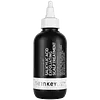What's inside
What's inside
 Key Ingredients
Key Ingredients

 Benefits
Benefits

 Concerns
Concerns

 Ingredients Side-by-side
Ingredients Side-by-side

Water
Skin ConditioningCellulose Acetate
Glycolic Acid
BufferingDicaprylyl Carbonate
EmollientGlycerin
HumectantCetearyl Alcohol
EmollientHydroxyethyl Acrylate/Sodium Acryloyldimethyl Taurate Copolymer
Emulsion StabilisingSodium Hydroxide
BufferingCoconut Alkanes
EmollientCetearyl Olivate
Sorbitan Olivate
EmulsifyingLactic Acid
BufferingSclerocarya Birrea Seed Oil
HumectantSimmondsia Chinensis Seed Oil
EmollientCitrullus Lanatus Seed Oil
EmollientPassiflora Edulis Seed Oil
EmollientCaprylic/Capric Triglyceride
MaskingAdansonia Digitata Seed Extract
Skin ConditioningSalicylic Acid
MaskingSodium PCA
HumectantPrunus Amygdalus Dulcis Seed Extract
Skin ConditioningVitis Vinifera Juice Extract
AntioxidantSodium Lactate
BufferingSodium Hyaluronate Crosspolymer
HumectantCoco-Caprylate/Caprate
EmollientPCA
HumectantAlanine
MaskingArginine
MaskingGlycine
BufferingHistidine
HumectantIsoleucine
Skin ConditioningPhenylalanine
MaskingProline
Skin ConditioningSerine
MaskingThreonine
Valine
MaskingCitric Acid
BufferingAspartic Acid
MaskingSorbitan Isostearate
EmulsifyingPropanediol
SolventZinc Oxide
Cosmetic ColorantPolysorbate 60
EmulsifyingPhenoxyethanol
PreservativeCaprylyl Glycol
EmollientTocopherol
AntioxidantHexylene Glycol
EmulsifyingPentylene Glycol
Skin ConditioningEthylhexylglycerin
Skin ConditioningWater, Cellulose Acetate, Glycolic Acid, Dicaprylyl Carbonate, Glycerin, Cetearyl Alcohol, Hydroxyethyl Acrylate/Sodium Acryloyldimethyl Taurate Copolymer, Sodium Hydroxide, Coconut Alkanes, Cetearyl Olivate, Sorbitan Olivate, Lactic Acid, Sclerocarya Birrea Seed Oil, Simmondsia Chinensis Seed Oil, Citrullus Lanatus Seed Oil, Passiflora Edulis Seed Oil, Caprylic/Capric Triglyceride, Adansonia Digitata Seed Extract, Salicylic Acid, Sodium PCA, Prunus Amygdalus Dulcis Seed Extract, Vitis Vinifera Juice Extract, Sodium Lactate, Sodium Hyaluronate Crosspolymer, Coco-Caprylate/Caprate, PCA, Alanine, Arginine, Glycine, Histidine, Isoleucine, Phenylalanine, Proline, Serine, Threonine, Valine, Citric Acid, Aspartic Acid, Sorbitan Isostearate, Propanediol, Zinc Oxide, Polysorbate 60, Phenoxyethanol, Caprylyl Glycol, Tocopherol, Hexylene Glycol, Pentylene Glycol, Ethylhexylglycerin
Water
Skin ConditioningPropanediol
SolventSalicylic Acid
MaskingBetaine
HumectantPanthenol
Skin ConditioningPEG-40 Hydrogenated Castor Oil
EmulsifyingPhenoxyethanol
PreservativePolyquaternium-37
Hexylene Glycol
EmulsifyingCapryloyl Glycine
CleansingCitronellyl Methylcrotonate
MaskingSodium Hydroxide
BufferingEthylhexylglycerin
Skin ConditioningXylitylglucoside
HumectantTrisodium Ethylenediamine Disuccinate
 Reviews
Reviews

Ingredients Explained
These ingredients are found in both products.
Ingredients higher up in an ingredient list are typically present in a larger amount.
Ethylhexylglycerin (we can't pronounce this either) is commonly used as a preservative and skin softener. It is derived from glyceryl.
You might see Ethylhexylglycerin often paired with other preservatives such as phenoxyethanol. Ethylhexylglycerin has been found to increase the effectiveness of these other preservatives.
Hexylene Glycol is a surfactant. Glycols are a class of alcohols. Hexylene Glycol is a surfactant and emulsifier.
As a surfactant, Hexylene Glycol helps gather dirt and oil on your skin to be washed away.
As an emulsifier, Hexylene Glycol helps keep water and oil together. This prevents them from separating in a product. Hexylene Glycol also thins out the texture of a product by lessening viscosity.
Hexylene Glycol has a small molecular weight.
Learn more about Hexylene GlycolPhenoxyethanol is a preservative that has germicide, antimicrobial, and aromatic properties. Studies show that phenoxyethanol can prevent microbial growth. By itself, it has a scent that is similar to that of a rose.
It's often used in formulations along with Caprylyl Glycol to preserve the shelf life of products.
Propanediol is an all-star ingredient. It softens, hydrates, and smooths the skin.
It’s often used to:
Propanediol is not likely to cause sensitivity and considered safe to use. It is derived from corn or petroleum with a clear color and no scent.
Learn more about PropanediolSalicylic Acid (also known as beta hydroxy acid or BHA) is a well-known ingredient for treating skin that struggles with acne and clogged pores. It exfoliates both the skin's surface and deep within the pores to help clear out buildup, control oil, and reduce inflammation.
Unlike AHAs (alpha hydroxy acids), salicylic acid is oil-soluble. This allows it to penetrate into pores which makes it especially effective for treating blackheads and preventing future breakouts.
Salicylic acid is also known for its soothing properties. It has a similar structure to aspirin and can calm inflamed or irritated skin, making it a good option for acne-prone skin that is also sensitive.
Concentrations of 0.5-2% are recognized by the U.S. FDA as an over-the-counter topical acne product.
It can cause irritation and/or dryness if one's skin already has a compromised moisture barrier, so it's best to focus on repairing that before introducing this ingredient into your routine.
While salicylic acid does not increase sun sensitivity, it’s still important to wear sunscreen daily to protect your skin.
If you are looking for the ingredient called BHA or Butylated Hydroxyanisole, click here.
Learn more about Salicylic AcidSodium Hydroxide is also known as lye or caustic soda. It is used to adjust the pH of products; many ingredients require a specific pH to be effective.
In small amounts, sodium hydroxide is considered safe to use. However, large amounts may cause chemical burns due to its high alkaline.
Your skin has a natural pH and acid mantle. This acid mantle helps prevent harmful bacteria from breaking through. The acid mantle also helps keep your skin hydrated.
"Alkaline" refers to a high pH level. A low pH level would be considered acidic.
Learn more about Sodium HydroxideWater. It's the most common cosmetic ingredient of all. You'll usually see it at the top of ingredient lists, meaning that it makes up the largest part of the product.
So why is it so popular? Water most often acts as a solvent - this means that it helps dissolve other ingredients into the formulation.
You'll also recognize water as that liquid we all need to stay alive. If you see this, drink a glass of water. Stay hydrated!
Learn more about Water